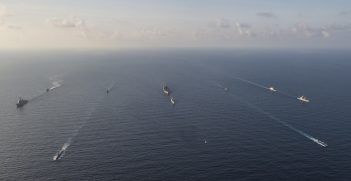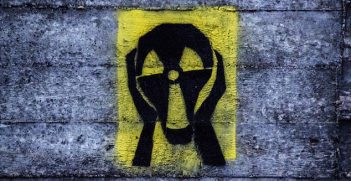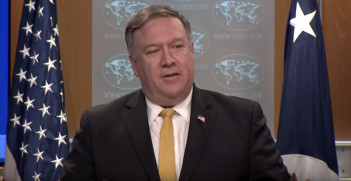Book Review: Transforming Nuclear Safeguards Culture: The IAEA, Iraq, and the Future of Non-Proliferation

The International Atomic Energy Agency’s (IAEA) safeguards system defends human civilisation. Trevor Findlay’s book casts new light on one of humanity’s greatest achievements, enabling a non-specialist reader to better understand some of the issues and influences affecting how the safeguards system has developed.
The term “safeguards” refers to the verification system applied to ensure states meet their treaty commitments to not divert nuclear energy and nuclear material from peaceful use to nuclear weapons. The principal treaty involved is the Nuclear Non-Proliferation Treaty (NPT). The NPT gives the responsibility of verifying these commitments to the IAEA and the agency’s safeguards system. Through this work, the IAEA has become popularly known as the “UN nuclear watchdog.”
Safeguards operate at the intersection of technology, law, and politics. Findlay’s book provides a fascinating insight into how the IAEA works as an international inspectorate, gathering safeguards-relevant information and making assessments about states’ compliance with the NPT and associated safeguards agreements.
Safeguards culture may seem like a highly esoteric subject of only specialist interest. However, the IAEA’s central role in efforts to prevent the spread of nuclear weapons is of vital importance to international peace and security. How the IAEA performs its responsibilities, especially its effectiveness, should be of interest to policymakers, diplomats, military analysts, and many others. This makes Findlay’s book of far wider relevance than its title may suggest.
Considering that the IAEA is a major international organisation with a multi-nation staff, interacting with governments and industry in a complex operating environment, Findlay’s book is also of interest to those studying organisational culture more broadly. Organisational culture can be simply described as “how we do things here.” Influences on the culture of an organisation include the values, beliefs, knowledge, skills, and vision of staff members. As Findlay points out, every organisation, whether it is acknowledged or not, has its own culture. The IAEA is no exception.
Safeguards comprise the IAEA’s largest functional area, with the highest public and political profile. The culture ingrained in this area has a major influence on the way the IAEA goes about its safeguards work. Findlay’s book shows how cultural factors contributed to a major failure of the IAEA’s safeguards system in Iraq, a failure which could have undermined confidence in the non-proliferation regime. The book also shows the resilience of safeguards culture — how the IAEA and supportive governments were able to work collaboratively to recover from this low point and strengthen the IAEA’s safeguards system.
Safeguards are a relatively modern discipline, starting in the 1950s. Initially, safeguards arrangements were developed by nuclear suppliers — particularly the United States — and applied under bilateral agreements to ensure that supplied items and materials remained in peaceful use. Safeguards activities were officially taken up by the IAEA after its establishment in 1957.
Initially IAEA safeguards were limited in scope, but even so a substantial input of professional judgement was required in the development of inspection procedures frequencies, access rights, measurement techniques, sample sizes, design of monitoring equipment, and so on. Cultural influences come into play wherever judgement is involved, and there are diverse national and professional backgrounds among the IAEA staff.
The NPT, which entered into force in 1970, brought about a fundamental change in the scope of safeguards. For non-nuclear-weapon states, the requirement to accept IAEA safeguards expanded from items and materials supplied under bilateral agreements to the entirety of a state’s nuclear materials and activities. This new form of safeguards — applying to all the nuclear material in a state — was termed “full-scope safeguards” (today known as comprehensive safeguards).
For a combination of reasons, including the massively expanding workload, the lack of suitable verification techniques, and the belief that states would not accept a “police-like” operation, the IAEA chose to focus on the correctness of states’ safeguards declarations. The IAEA’s focus on correctness — whether the information in declarations accurately reflected declared inventories — as opposed to completeness — whether a state might have undeclared nuclear material and activities — thus became predominant. It was thought that any undeclared nuclear activities would be based on the diversion of material from declared facilities and could be detected through safeguards at those facilities. The IAEA also held the optimistic belief that undeclared activities might be discovered and that they would be reported to the IAEA through national intelligence mechanisms.
This neglect of completeness was a fateful decision, ultimately leading to the failure to detect Iraq’s undeclared nuclear program, which came to light in 1991. The reasons for this failure, and the contributing cultural influences, are discussed at length in Findlay’s book. Starting from the 1990s, there has been a major effort — which remains ongoing — to strengthen the safeguards system, especially to develop the techniques needed to identify and investigate possible undeclared nuclear activities.
The IAEA’s perspective changed from a facility-level approach to a state-level approach, considering the various ways a state could acquire nuclear material: how undeclared nuclear activities could be linked to declared parts of the fuel cycle, the indicators that might be present if there were undeclared activities, and how such indicators could be detected. New safeguards approaches and techniques included wider information reporting requirements, wider access rights for inspectors, collection and analysis of a broader range of information, and use of satellite imagery and environmental analysis. Compared with the more quantitative approaches of “traditional” safeguards, the strengthened safeguards system necessarily involves substantial qualitative judgment. As a result, cultural dimensions have become even more important.
Considering the importance of organisational culture, it is surprising that neither the IAEA nor states have explicitly focused on safeguards culture and how this can be developed. This is in marked contrast to the IAEA’s other regulatory areas, including nuclear safety and security, where the importance of culture is recognised and considerable effort has gone into articulating appropriate cultural values.
A key difference may be that in nuclear safety and security, the primary responsibility remains with states rather than the IAEA, so the development of culture is seen as way of encouraging best practice by states. This way of thinking overlooks two major factors. First, in multi-nation organisations such as the IAEA, establishing a shared culture is particularly important to ensure staff work together toward a common objective. Second, safeguards should not be viewed principally as an IAEA activity — safeguards should be seen as a collaborative endeavour between the IAEA, governments, national safeguards authorities, industry, and the individuals involved. Seen in this way, safeguards are not an adversarial activity aimed at catching out the state, but a way of furthering shared objectives, preventing the spread of nuclear weapons, building international confidence, and reinforcing international peace and security.
Findlay concludes that just as the nuclear safety and security communities have done, the IAEA should engage the entire safeguards community, including member states, in defining nuclear safeguards culture and identifying the elements that constitute an optimal culture. As I have discussed, this effort should not be limited to the IAEA’s culture but should take an internationalist approach and look at developing safeguards as a truly multinational discipline.
Considering the challenges involved, the IAEA’s safeguards system represents a remarkable international achievement. Trevor Findlay’s book casts new light on a complex subject, enabling a non-specialist reader to better understand some of the issues and influences affecting how the safeguards system has developed, and identifying a key area — namely safeguards culture — where serious focused effort can deliver substantial international benefit.
This is a review of Trevor Findlay, Transforming Nuclear Safeguards Culture: The IAEA, Iraq, and the Future of Non-Proliferation (MIT Press, 2022). ISBN: 9780262543736
John Carlson AM was Director General of the Australian Safeguards and Non-Proliferation Office (ASNO) 1989-2010 and chair of the IAEA’s Standing Advisory Group on Safeguards Implementation 2001-06. Current affiliations include the Asia-Pacific Leadership Network on Nuclear Non-Proliferation and Disarmament (APLN) and the Vienna Center for Disarmament and Non-Proliferation (VCDNP). His publications (co-authored) relevant to this review include Reflections on Safeguards Culture and The IAEA’s Safeguards System as the Non-Proliferation Treaty’s Verification Mechanism.
This review is published under a Creative Commons License and may be republished with attribution





